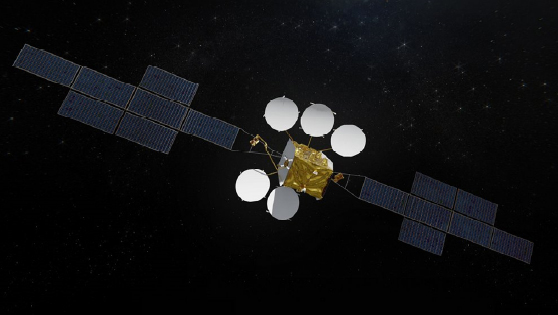
-
StatusCompleted
-
Status date2020-08-20
-
Activity Code4F.083

The objective of the “Next Generation Solar Array Low Level TRL Development Activities” was to:
- Establish a system layout for a hybrid solar array,
- Perform a system analysis, and
- Raise the TRL of technologies and designs for the application in hybrid solar arrays.
In this case, a hybrid S/A is specified as a combination of a
- conventional inline S/A used as backbone with its typical components – such as PVA on rigid sandwich structures, yoke, hold-down and release mechanisms, deployment mechanisms, etc. Examples of this design are the Airbus’ Eurostar 3000 S/A family and the solar arrays for the SGEO satellite platform
and
- a flexible S/A, i.e. lightweight semi-rigid panels which are (mainly laterally) grouped around the rigid panels. These structures have a similar PVA area as their rigid counterparts but are designed as thin flexible sheets supported by a stiffening lattice.

The most challenging technology developments required for the new,hybrid S/A concept are:
- Overall mechanical and electrical system design and analyses
- Solar cell interconnector technology based on KO8242 material
- Solar cell and external diode contacting technologies
- Development of lateral panel hinges
- Advanced photo voltaic assembly (PVA) laydown
- Development of semi-rigid structures
- Deployment and sequencing mechanism for semi-rigid panels
The main benefits of NGSA are:
- Considerably reduced mass as the semi-rigid structures are 1/4 to 1/5 lighter than rigid structures
- Lower stowage volume compared to conventional S/A designs with the same number of panels. The volume of a semi-rigid panel with PVA and harness is only about 1/3 of a conventional panel
- Scalability and modularity are inherent to the hybrid design. By using the semi-rigid panels as generic building block a wide range of power demands can be met.
- Increased power capabilities enable electrical orbit raising (EOR) strategies with high thrust electrical propulsion systems
The key feature of the NGSA-concept is the development of light weight semi-rigid panels as generic building blocks to enlarge the deployed solar array surface depending on the platform / mission power demand. During launch, the semi-rigid panels are folded in between the rigid panels in order to minimize the stowage volume. Hence, the stowed S/A volume and mass stay considerably low compared to its predecessors of the same power class. Moreover, the modular concept offers substantial growth potential for future high power applications.
The system architecture development mainly focused on the integration of the lateral panels into the overall design as well as the development of a deployment strategy.
These boundary conditions eventually led to the semi-rigid panel design. The following aspects were considered and tested for the definition and characterisation of the semi-rigid panel structure:
- ESD properties
- α-ɛ measurement
- Leak current (electrical resistance)
- Sheet tensile, also after radiation
- Mechanical properties (bending, torsional, strength, etc. of stiffeners)
- Manufacturing trials
Furthermore, the hinges for the semi-rigid panels had to be developed. In contrast to conventional hinges, they are solely made from two tape springs and the corresponding interface brackets. The springs combine the hinge function, energy storage for deployment, and electrical conductor in a single element.
The technologies developed within this contract are largely applied in the Eurostar NEO Solar Array for the first time. In addition to this, the processes and technologies (e.g. KO8242 interconnector technology, new solar cell contacting technology or advanced laydown) can also be used for other missions, e.g. MEO or even LEO (mission specific delta qualification might be required). Also, they allow for a much higher degree of automatization in the PVA production.
With the Eurostar NEO S/A family, many of the developed technologies of this successful Artes 5.2 contract are currently under qualification, or ready for flight application.
The first telecommunication satellites based on the Eurostar NEO platform will be the Eutelsat Hotbird satellites 13F and G with a launch date in 2021.



